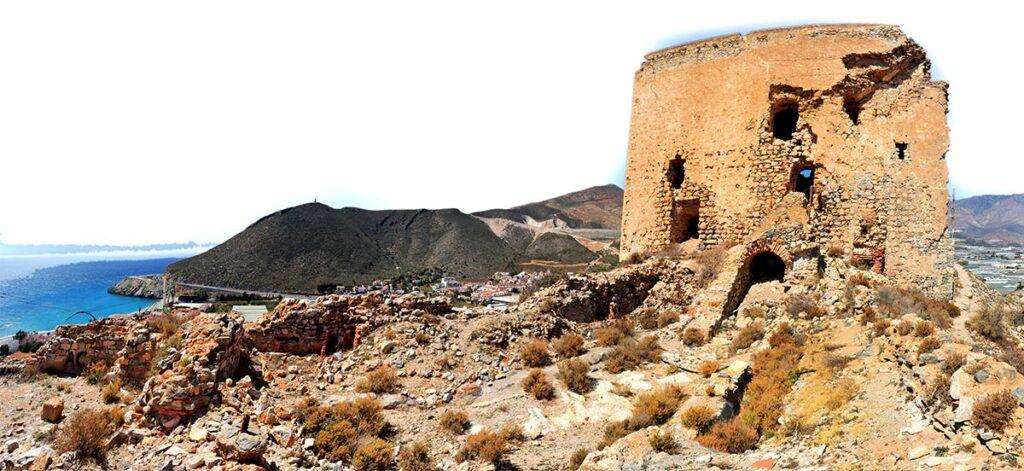- Home
- Listings
- Things To See & Do
- Car Hire
- News
- Properties
- What’s On
ES
Castell de Ferro
Castell de Ferro

Castell de Ferro reveals itself as a hidden gem that uniquely combines natural beauty and historical charm. This coastal haven, with its picturesque beaches and the tranquil waters of the Mediterranean, captivates visitors seeking authenticity and serenity in Spain.
This town, part of the municipality of Gualchos, is located in the center of the Costa Tropical region, near Gualchos, El Romeral, Calahonda, and La Mamola. Despite other localities in the municipality, Castell de Ferro holds the title of municipal capital, hosting the town hall.
The enclave of Castell de Ferro is nestled among numerous small coves dotting the rugged Granada coast, at the foot of the hill crowned by its ancient castle, amid the extensive Gualchos ravine. It is known for its uncrowded beaches, providing an ideal setting for relaxation and fishing, a popular sport thanks to the 5.5 kilometers of cliffs offering a breathtaking backdrop.
The town breathes history, reflected in its well-preserved architecture and cultural heritage. Landmarks like the Castle of Castell de Ferro bear witness to its rich past. Beyond its historical allure, the pristine beaches attract sun and water enthusiasts against a backdrop of lush hills and blue waters.
This coastal spot not only offers sun and sea but also serves as a gateway to exploring the wonders of the Costa Tropical. Its strategic location provides easy access to nearby attractions, ensuring a comprehensive experience on the Mediterranean coast. Celebrations like the patron saint festivals in honor of San Miguel Arcángel and the Tourist Festivals add a special touch to the experience, making Castell de Ferro a charming and welcoming destination.
To travel from Almuñécar to Castell de Ferro on the Costa Tropical, you can follow these directions:
Take the N-340: Start by driving east on the N-340 road, which runs along the coast. Continue on the N-340.
Castell de Ferro is situated along the N-340.
Places to visit in Castell de Ferro

Castell de Ferro Castle
The Castle of Castell de Ferro situated 90 meters above the sea is a historical gem that stands as a testament to the area’s rich and diverse history. This castle has played a significant role in the region’s strategic defenses over the centuries.
The exact origins of Castell de Ferro Castle are somewhat shrouded in mystery, with records dating back to the 13th century. It is believed that the castle was originally constructed by the Nasrid dynasty, the Muslim rulers of the Kingdom of Granada, during the period of Al-Andalus.
The castle’s position overlooking the Mediterranean Sea made it a crucial stronghold for coastal defense. It allowed its occupants to monitor maritime traffic, protect against potential invasions, and control trade routes along the coast.
The castle exhibits a mix of architectural styles, reflecting the various cultures and periods that influenced its construction and renovation. Elements of Moorish, Gothic, and later Mudejar styles can be observed in its design. The structure includes defensive walls, towers, and inner courtyards, showcasing the adaptability of the castle over the centuries.
The Castle consists of three distinguishable parts: a sturdy vaulted rectangular tower, a rectangular courtyard in the center built in the 16th century, with wings on the sides designated for housing the garrison and kitchens, and finally, a semicircular battery on the southern flank, added in the 18th century. Surrounding the entire enclosure was a defensive wall known as a “barbacana.”
Over the years, Castell de Ferro Castle witnessed numerous historical events, including conflicts between Muslim and Christian forces during the Reconquista. In 1849, it was reported that the castle was in ruins, attributed to an explosion in a gunpowder depot that occurred in April 1836 due to a lightning strike, which brought down the eastern side. However, it also appears to have been destroyed by the English during the Peninsular War. The garrison at this castle varied over time. At the beginning of the 15th century, it had 30 soldiers; later, it was equipped with 11 infantrymen on foot. Finally, in 1764, it had the following staff: 1 officer; 2 sergeants and 16 soldiers; 1 sergeant and 4 artillerymen; 1 storekeeper and 1 chaplain.
By the 18th century, the castle fell into a state of disrepair and was eventually abandoned. In recent years, efforts have been made to preserve and restore the castle, recognizing its historical and cultural value.
Today, the Castle of Castell de Ferro stands as a captivating reminder of the region’s complex history. Visitors have the opportunity to explore its walls, towers, and courtyards, taking in panoramic views of the Mediterranean coastline. It serves as a link to the past, offering insights into the strategic importance of coastal defense in the history of Granada.


Playa Rijana
Crystal-clear cove, perfect for snorkeling, paddleboarding, and kayaking. With easy pedestrian only access (you’ll need to walk about 5 minutes after parking your car). There is a small beach bar where you can buy drinks and other refreshments.

Playa de Sotillo
It is an extensive urban beach with artificial defenses in some sections. It is composed of sand and gravel and has a length of 1300 meters. It has a promenade and some services. Awarded the Q for Quality since 2017. Good accessibility to the sandy area. The waters are calm. It has a lifeguard service. Public toilets are available. It also has shaded areas.
